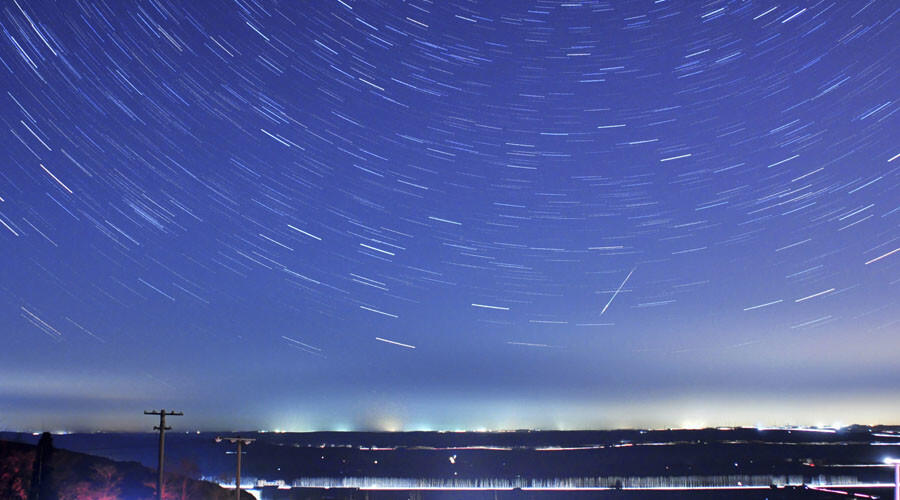August’s annual Perseid meteor shower is expected to peak on Wednesday, with a special weather permit and perfect lunar conditions, coming just one day before the new moon.
Astronomers hope that the meteor shower, which falls in the middle of the week this year, is going to be really special. The celestial conditions will differ from last year’s, when a bright moon faded the colors of the shooting stars. Fast and sparkling meteors, as well as so-called fireballs, which are larger and brighter with longer traces originating from bigger particles of cometary material, make the Perseids a really spectacular show. Skygazers around the world are drawn outside to enjoy the celestial show in summer nighttime weather. “I never miss the Perseid meteor shower. Every year I’ve taken the opportunity to go outside just before dawn. It is one of nature’s best night shows,” astronomer Brendan Owens, at the Royal Observatory Greenwich, told The Guardian. In the UK, the meteor shower will be peaking after midnight on Wednesday, but due to clouds obscuring most of the country, excepting coastal areas, a better day to observe the shower would be Thursday. US observers turn out to be luckier. The best time to head for open spaces with clear skies would be after midnight on both Tuesday and Wednesday nights, Slooh website’s astronomer Bob Berman said. “People away from cities should see one a minute starting at midnight both nights, but city dwellers will only see the brightest ones, reducing the number to maybe one every 10 minutes. Also, an open area of sky is best. Don’t just try to peek between trees or buildings,” he told AccuWeather website.
“The best opportunity to see the Perseid meteor shower is during the dark, pre-dawn hours of August 13. The Perseids streak across the sky from many directions,” NASA said in a press release, advising observers to simply lie on the ground and look straight up and remember that it takes human eyes about 30 minutes to adjust to the darkness. The meteor shower, which received its name from the constellation Perseus, was first observed by Chinese astronomers in 36 AD, according to the records.
(RT)











